Colin Campbell Norris
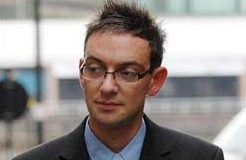
Classification: Serial killer
Characteristics: 'Angel of Death' nurse
Number of victims: 4 - 7
Date of murders: 2002
Date of arrest: October 12, 2005
Date of birth: February 12, 1976
Victims profile: Doris Ludlam, 80, Bridget Bourke, 88, Irene Crookes, 79, and Ethel Hall, 86 (patients)
Method of murder: Poisoning (massive doses of insulin)
Location: Leeds, West Yorkshire, England, United Kingdom
Status: Sentenced to life imprisonment, and ordered to serve a minimum term of 30 years in prison on March 4, 2008
Colin Campbell Norris (b. 1976, Glasgow) was a Scottish nurse and convicted serial killer from the Milton area in Glasgow who murdered four elderly patients in a hospital in Leeds, England, in 2002. He was sentenced in 2008 to serve a minimum of 30 years in prison.
Crimes
Norris worked at Leeds General Infirmary and St James's Hospital. Suspicions were raised when Norris predicted the death of one patient, Ethel Halls, saying she would die at 5:15am and she did. He stated at the time: "it is always in the morning when things go wrong". When questioned by police about this and three other patients who had died while he was on duty, he said "he seemed to have been unlucky over the last 12 months". The four patients were 79, 80, 86 and 88 years old. The police investigated 72 cases in total.
Trial
The trial took 19 weeks and the jury deliberated for 4 days. Norris was convicted on 3 March 2008 of the murder of four women, and the attempted murder of a fifth aged 90. He was sentenced to life imprisonment, and ordered to serve a minimum term of 30 years in prison the following day. Judge Mr Justice Griffith rejected any possibility that Norris was practising euthanasia because none of the victims was terminally ill. He told Norris when sentencing:
"You are, I have absolutely no doubt, a thoroughly evil and dangerous man. You are an arrogant and manipulative man with a real dislike of elderly patients. The most telling evidence was that observation of one of your patients, Bridget Tarpey, who said 'he did not like us old women'."
Referred to in the British press as the "Angel of Death", Norris killed his victims by injecting them with high levels of insulin. Though his victims were women, Norris is gay.
Jessie McTavish, a nurse convicted and then cleared in 1974 for the murder of an 80-year-old patient with insulin, has been identified as a possible inspiration for Norris. He once attended a lecture on her case while studying at nursing college.
Similar cases
In the aftermath of Norris's conviction, the British Media drew comparisons with Doctor Harold Shipman, Britain's most prolific serial killer who killed more than 250 patients by lethal injections. Det Ch Supt Chris Gregg who worked on the Shipman case and led the Norris investigation was convinced that Colin Norris would have gone on to kill considerably more people if he was not stopped in his tracks.
In 2006 Benjamin Geen, a nurse at a hospital in Banbury, Oxfordshire, was given 17 life sentences for murdering two of his patients and attacking 15 others. He used a variety of injections which often included insulin.
'Evil And Arrogant': Killer Nurse Is Jailed
Tuesday March 04, 2008
Nurse Colin Norris has been jailed for life and told he must serve a minimum term of 30 years after murdering four elderly hospital patients who were in his care.
Norris, 32, of Egilsay Terrace, Glasgow, killed the vulnerable women by giving them massive doses of insulin when they went into hospital in Leeds in 2002.
He was given four life sentences with a minimum term of 30 years for each of the murders and a 20-year sentence to run concurrently for attempted murder.
Jailing him at Newcastle Crown Court, Mr Justice Griffith Williams said: "You are, I have absolutely no doubt, a thoroughly evil and dangerous man... arrogant and manipulative, with a real dislike of elderly patients.
"There cannot be any suggestion you were motivated to hasten their ends to spare them suffering; indeed, there was no evidence that any of them was suffering apart from the pains that the elderly sometimes have.
"I suspect you enjoyed the power that ending a life gave you, choosing the elderly because they were defenceless.
"Then, emboldened by the fact that nobody suspected what was happening, it is clear you embarked on what in truth was a campaign of killing - a campaign which would, no doubt, have continued had not experienced medical staff been alerted to what was happening."
The judge said he had considered imposing a full life sentence without any early release.
The aggravating factors were that the victims were vulnerable, Norris breached the trust others had in him as a nurse and that there was a degree of premeditation.
Norris showed no emotion as he was led away from the dock.
West Yorkshire Police detectives have said he showed no remorse for killing Doris Ludlam, 80, Bridget Bourke, 88, Irene Crookes, 79, and Ethel Hall, 86, while he worked at the Leeds General Infirmary (LGI) and the city's St James' Hospital.
He also tried to kill Vera Wilby, 90, but she survived the coma which followed the unnecessary insulin injection.
Police began an investigation after Dr Emma Ward noticed in November 2002 that Mrs Hall had slipped into a hypoglycaemic coma despite not being a diabetic.
Detectives looked at other deaths on the wards from comas when Norris was working and after a lengthy investigation found that by the time Dr Ward raised her concerns he had already killed three times and failed with another attempt.
The nearest the prosecution came to outlining a motive was to suggest that Norris disliked working with the elderly.
All his victims were frail after suffering from hip problems, and could all have been considered a burden to nursing staff.
Colin Norris, 'Angel of Death' nurse, may have killed more
04/03/2008
A staff nurse convicted of murdering four elderly women patients may also have killed three others and was caught before he became "another Harold Shipman", police have said.
Colin Norris, 32, believed he could kill with impunity, claiming four "frail and helpless" victims within six months by injecting them with lethal doses of insulin.
He boasted to hospital colleagues that "someone always died" when he was on the night shift and even accurately predicted when one would lapse into a coma.
Norris, who had developed a hatred of elderly women in particular, showed no emotion as he was found guilty of four murders at Newcastle Crown Court.
He will be sentenced on Tuesday.
Police believe if Norris had not been caught - due to a doctor's vigilance - he could have killed many more, drawing comparisons with Shipman, Britain's most prolific serial killer who killed more than 250 patients by lethal injections.
Stuart Hall, the son of one of his victims, Ethel Hall, said Norris "was either trying to play God or wanted to be seen as a hero". Detectives said he killed simply because the women irritated him.
The gay nurse disliked bathing elderly women.
Det Ch Supt Chris Gregg, who worked on the Shipman case and led the Norris investigation, said: "Harold Shipman showed what can happen if a killer is not caught until the end of his career.
"Here, we have a killer caught at the very beginning of his career. I am convinced that Colin Norris would have gone on to kill considerably more people if he was not stopped in his tracks."
The detective added: "Norris was growing in confidence, he believed he was perfecting his craft. If he had not been caught he would have carried on. Why? Because he enjoyed it.
"He was selecting people who were a nuisance to him. One of the ladies was throwing her bedclothes off her just before he killed her. To him she was an irritant, a nuisance, and for that she died."
Norris, from Glasgow, committed his crimes in 2002 while working in hospitals in Leeds and once said he disliked caring for "geriatric patients".
He was caught when a specialist, Dr Emma Ward, grew suspicious and ordered blood tests on Mrs Hall, 86, after she was found unconscious.
Mrs Hall, who was admitted to hospital with a broken hip, was discovered to have been given 1,000 unnecessary units of insulin, compared to the 50 a day given to someone with diabetes, a condition she did not have.
It prompted a police inquiry into the deaths of 72 patients, which identified 18 suspicious deaths, eight in which Norris the nurse at the point of death.
He was later arrested on suspicion of murdering five women and trying to murder another while clinical explanations were accepted for two of the deaths.
Norris was charged with four murders - Mrs Hall, Doris Ludlam, 80, Bridget Bourke, 88, and Irene Crookes, 79, and one attempted murder, Vera Wilby, 90, after the Crown Prosecution Service considered there were too many complicating medical factors to bring a fifth murder charge.
Post mortem examinations were not conducted in the case of the other two and the deaths were certified as through natural causes.
Prosecuting, Robert Smith QC, told Newcastle Crown Court there were "remarkably common facts" between Norris's five victims, who had all undergone surgery for hip fractures.
Each was in poor health and could be regarded as a "burden to nursing staff", Mr Smith said.
Each suffered from hypoglycaemia between four and 12 days after surgery.
Norris has never revealed a motive for his crime, leading senior detectives to believe he did it simply because he had the opportunity to do so.
Det Ch Supt Gregg said: "What has shone out through this investigation and trial is the absolute dedication of nursing and medical professionals. Colin Norris is an exception to that.
"While others around him were duly caring for their patients, he was looking for opportunities to kill them by poisoning them with insulin.
"He presented himself to police during interview and the court during the trial as an extremely arrogant individual who has not shown the slightest degree of remorse or emotion for what he has done.
"Why he chose to do what he did is only known to him, but it is clear that all hi victims were frail, elderly ladies who were vulnerable in his care.
"Norris is not only a dangerous criminal, but cunning in his actions, choosing times to commit his crimes carefully, being either early in the morning or at weekends when he knew senior and specialist staff were not routinely on duty."
Stuart Hall, 53, a service engineer, called for a public inquiry and also compared Norris to Dr Shipman.
Mr Hall, her son, said: "As the person who injected his victims with insulin, he was the only person who knew what was wrong with them and that gave him the choice if he wanted to administer the antidote and create a miracle revival.
"It gave him the power to give life and to take life. I hope they put him away permanently and never let him out."
Mr Hall added: "Somebody like that is extremely dangerous because they know how to kill discreetly.
"It is very much a Shipman-like thing. It could have been more than five and could yet still prove to be."
Mr Hall said Ethel's widower John had a heart attack three weeks after her death and other members of the family are sometimes too scared to go to hospital.
Dr Hugo Mascie-Taylor, medical director of Leeds Teaching Hospitals NHS Trust, said changes had since been implemented at their hospitals but added that none of the changes could have prevented Norris's crimes.
He said: "These were dreadful crimes that took the victims prematurely from their families. We are very sorry about this and our thoughts today are with the families: for any distress they suffered both at the time of their relative's death and during the course of bringing Colin Norris to justice."
Colin Norris, Angel of Death nurse: Timeline
February 12 1976: Colin Norris is born in Glasgow and raised in Partick by a supportive family.
August 1992: Norris achieves six GCSEs and studies travel, working in travel agencies before switching careers to work as a nurse.
September 1998: Norris begins studying for a Higher Nursing Diploma at Dundee University in the School of Nursing and Midwifery.
January and September 1999: Norris attends lectures on diabetes and the treatment of diabetic patients with insulin.
May 24 to July 4 1999: While training to be a nurse, Norris works on ward 11 at Ninewells Hospital in Dundee where he learns about the management of patients with diabetes.
1999: Norris cares for elderly patients on ward 7 at the Royal Victoria Hospital in Dundee as part of his training. He tells his tutor he hated the placement and missed part of it through "unauthorised absences".
January 11 2001: Norris's personal tutor gives a specific talk to her students on the subject of abuse of elderly patients, including particular reference to a Glasgow nurse in the 1970s who was convicted - but later freed on appeal - of killing elderly patients by injecting them with insulin.
May 21 2001: Norris works at the Riverside Nursing Home in Dundee caring for elderly people and misses 11 days of the placement. During another placement in 2001 at Broughty Ferry Health Centre, near Dundee, Norris tells a district nursing sister he "didn't like working with geriatric patients".
June 2001: Norris graduates from Dundee University with a Higher Nursing Diploma.
October 2001: Norris starts work as a staff nurse at Leeds General Infirmary where he works on ward 36. During the next 14 months he also works on the orthopaedic ward at St James's Hospital in the city.
May 2 2002: Vera Wilby, 90, is admitted to ward 36 at Leeds General Infirmary with a broken left hip after a fall in Rawdon, Leeds. Her condition deteriorates as she recovers from surgery.
May 17 2002: Norris administers a dose of the powerful painkiller morphine to Mrs Wilby to make her drowsy. He then administers more drugs and 90 minutes after he finishes his shift at the hospital, she is found semi-conscious with a sudden hypoglycaemic attack but survives.
June 12 2002: Doris Ludlam, 80, from Pudsey, West Yorkshire, suffers a fall and breaks her hip at Chapel Allerton Hospital in Leeds where she is receiving treatment for a heart complaint. She is transferred to ward 36 at Leeds General Infirmary for surgery.
June 16 2002: Bridget Bourke, 88, of Holbeck, Leeds, is admitted to ward 36 at Leeds General Infirmary with a broken right hip.
June 17 2002: Surgeons operate to repair Mrs Bourke's hip. She is frail and confused, with bleeding in her head and complications from a stroke and she also develops a serious bacterial infection.
June 25 2002: Norris gives Mrs Ludlam an "unnecessary" dose of the powerful painkiller diamorphine, which is double the recommended level. This renders her drowsy and Norris then gives her drugs which reduce her blood sugar level before he goes off shift at 7.45am. She is discovered in a coma about 40 minutes later.
June 27 2002: Mrs Ludlam dies.
July 20 2002: Mrs Bourke falls out of bed.
July 21 2002: Norris, who is working the night shift, claims to have discovered Mrs Bourke slumped in bed at 3.10am. Doctors are called and she is found to be deeply unconscious after a hypoglaecaemic attack, despite not being diabetic.
July 22 2002: Mrs Bourke never recovers and dies shortly after midnight. The death certificate records the cause of death as from a stroke.
October 2002: Mrs Wilby is discharged from hospital and goes to live at a nursing home. She dies the following year from unrelated causes.
October 10 2002: Irene Crookes, 79, from Hunslet, Leeds, falls and fractures her hip and is treated on ward 23 at St James's Hospital. Norris treats her for several days and, although she remains unwell, breathless and requiring oxygen, and needing a walking frame to get about, her condition is giving no undue cause for concern. Norris records in her notes that her condition is improving.
October 19 2002: Norris reports finding Mrs Crookes "totally unresponsive" shortly before 6am. She has suffered a hypoglaecaemic attack but is not diabetic.
October 20 2002: Mrs Crookes dies.
November 2002: Ethel Hall, 86, of Calverley, Leeds, is admitted to ward 36 at Leeds General Infirmary with a fracture to her hip and undergoes surgery to repair it. All goes well and she appears to be recovering, being able to walk with assistance.
November 19 2002: Ethel Hall has fainting spell, which is not unknown for her.
November 20 2002: Ethel Hall takes a "very serious turn for the worse" in the early hours of the morning and staff find her choking. Her blood sugar levels are found to be very low and blood tests show abnormally high levels of insulin.
Earlier in the evening, Norris predicts this change in condition, without any medical indications, in a conversation with colleagues, saying: "Whenever I did nights someone always died." He continues: "It was always in the morning when things go wrong - about 5.15am."
December 6 2002: West Yorkshire Police are called in to investigate.
December 11 2002: Ethel Hall dies of irreversible brain damage without ever regaining consciousness.
December 2002: During questioning by the police, Norris tells officers "he seemed to have been unlucky over the last 12 months" but denies murdering his patients.
September 2003: 14 months after her death, Mrs Bourke's body is exhumed by detectives investigating Norris. A pathologist finds that she died from an insulin-induced coma.
October 12 2005: Norris is charged with four counts of murder and one of attempted murder.
October 16 2007: Norris goes on trial at Newcastle Crown Court charged with four counts of murder and one of attempted murder.
March 3 2008: Norris is found guilty of murdering Ethel Hall, Doris Ludlam, Irene Crookes and Bridget Bourke. He is also convicted of the attempted murder of Vera Wilby.
Colin Norris: From student to deadly abuser
04/03/2008
Colin Norris’s hatred of elderly women developed from the first time he was asked to wash and bathe them at a nursing home.
But what could have inspired the gay nurse on his path towards serial killing may have been the notorious case of Jessie McTavish, accused of being the “sister of mercy who became an angel of death".
Norris was an idle student at nursing college, but one of the few lectures he attended was about the abuse of elderly patients – citing the case of Sister McTavish, who was jailed for killing an 80-year-old patient with an injection of insulin in 1974 although the conviction was later overturned on appeal.
A year after the lecture, Norris’s campaign of murder began adopting the same method - using insulin - and later he even copied McTavish who allegedly predicted the minute that a patient would die.
Norris was born in Glasgow 32 years ago to his namesake father, a painter and decorator, and his mother June, who worked as a typist.
The paradox of his pathological dislike of elderly patients was that the person he had been closest to in his life was his grandmother.
As an only child, he became particularly close to Elizabeth Ogilvie, who is in her late 70s, after his parents divorced when he was nine years old.
She refuses to accept he could be the killer of four woman pensioners, saying: “He can’t have done it, not my grandson, not my boy.”
Later in his life, Norris would tell a colleague that he did not like bathing female patients - “especially because they were the same age as my grandmother”.
He grew up in the city’s Partick area and saw little of his father after the matrimonial split, Mrs Norris remarrying four years later.
Mother and son went to live with her new husband Raymond Morrison, also a painter and decorator, and his young son, in the next street to her mother in Milton, Glasgow.
Norris served as a boy scout and helped look after mentally handicapped people while also becoming involved in amateur dramatics.
At secondary school he passed six standard examinations, Scotland’s equivalent of GCSEs, before going on to college to study travel.
He left the course after a year to work in travel agencies before deciding to train as a nurse when he was 22.
Norris said he made the career switch because “you get to deal with people and get to make a difference in their lives.”
He studied for a Higher Nursing Diploma at Dundee University’s School of Nursing and Midwifery and also had two part-time jobs.
His first contact with elderly patients came during a placement on Ward Seven at the Royal Victoria Hospital, Dundee, in 1998.
Norris complained to a friend that he was unhappy because he did not like geriatric patients - he preferred the excitement of trauma work.
He was also sent to the Riverside View Nursing Home in Dundee, but reported in sick with a sore throat after three days and never returned to complete the planned four week stay.
He told a colleague: “When I was bathing female patients and washing them down below I found it difficult to start with, especially because they were the same age as my grandmother.”
During the three year course, Isabella McLafferty, his personal tutor, recalls having to warn him about his attitude and poor attendance.
It was she that on January 11, 2001 gave a specific talk to her students on the subject of the alleged abuse of elderly patients, including particular reference to the case of Sister McTavish.
She was from Glasgow, Norris’s home city, and her trial caused a sensation three decades ago, although the conviction was later overturned.
As a trainee nurse Norris also worked Ward 11 at Ninewells Hospital, Dundee, where he learned about managing patients with diabetes.
While there he repeatedly refused to change patients or their bedding.
Police have found no evidence to suggest he harmed any of his charges during his student years.
But four months after qualifying he obtained a job as a staff nurse on Ward 36 at Leeds General Infirmary and a six month killing spree followed.
Norris was openly gay, spoke in a strong Scottish accent, wore thick black-rimmed glasses and is also remembered for nipping through the fire escape for a cigarette during night shifts.
He had no criminal record and shared accommodation with other men while living in Leeds.
His first attempt to kill a patient in May 2002 failed when 90 year old Vera Wilby survived because the insulin overdose was counteracted by her naturally high blood-sugar level.
Like the others victims to come, she was frail, vulnerable and in poor state of health both before and after undergoing surgery to repair a damaged hip.
Her quality of life was diminished and she was a difficult patient to care for.
At the end of one of Norris’s night shifts she was found by medical staff in a hypo-glycaemic state, her brain being starved of sugar.
She survived the attack but was the only one to do so.
Norris refined his killing technique before murdering Doris Ludlum, 80, in June 2002.
In the early hours of June 25, Norris gave her an “unnecessary” dose of the powerful painkiller diamorphine, which was double the recommended level.
This rendered her drowsy, and then before he went off shift at 7.45am, Norris injected insulin, which reduced her blood sugar level.
Forty minutes later she was discovered in a coma and she died two days later.
A month later Bridget Bourke, 88, died of the same hypo-glycaemic condition on Norris’ watch, and then Irene Crookes, 79, in October.
All the woman had been injected with massive insulin overdoses, even though they were not diabetics so did not need the drug, as they recovered from routine hip operations.
On each occasion, the deaths were put down to natural causes – and Norris’s confidence grew.
He told a colleague “someone always died” when he was on the nightshift and was said to have become so arrogant that he accurately predicted his next death, that of Ethel Hall, to within 15 minutes.
After she was found collapsed in a coma, Norris pointed to his watch and said to a staff nurse: “I told you so”.
Another former colleague said that Norris seemed to react with “detached amusement” when the women died, while two ex-patients claimed Norris verbally abused them after they rang an emergency buzzer on a ward when an elderly patient climbed out of bed.
They said he told them: “I hope you suffer” and “rot in hell”.
A total of 72 deaths were investigated by police as part of the investigation and 18 were classified as high priority before he was charged with the four murders and attempted murder.
Detectives believe he used the opiates to make his victims drowsy before injecting them with the lethal dose of insulin.
Police recovered documents detailing a less painful way of injecting morphine or diamorphine.
The prosecution said it was impossible to say what the motive was, but all the patients had been difficult and were capable of being a burden to medical staff.
He was suspended by the Royal College of Nursing the day after his arrest on Dec 11 2002. While on bail, he moved back to Glasgow, worked for an events company and travelled abroad eight times while under investigation.
Det Chf Supt Chris Gregg, who led the police inquiry, said: “His arrogance was astonishing. He thought he could get away with murder. “Each time we asked a question he simply evaded it. It was as if he was saying `You can’t prove a thing’.”
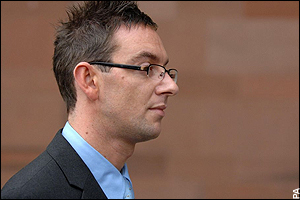
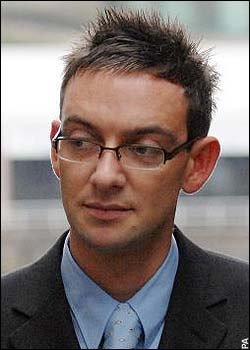
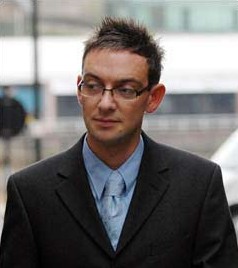
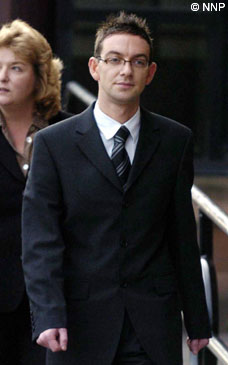

Colin Norris has been convicted of murdering four elderly women

The hospital staff nurse targeted patients in his care

He injected frail elderly women on this hospital ward with 20 times the normal dose of insulin
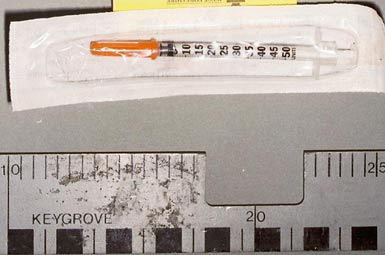
The high doses of insulin starved their brains of glucose, causing coma and death

The young Glaswegian nurse had attempted to kill one patient
and murdered three more before he became arrogant
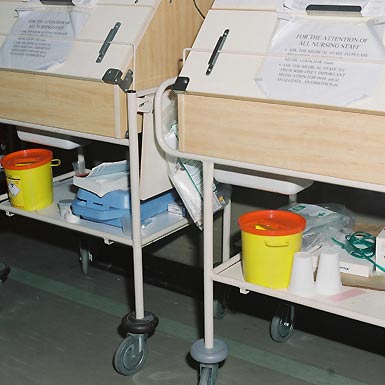
He announced to colleagues that a patient would die that night, probably around 5.30am
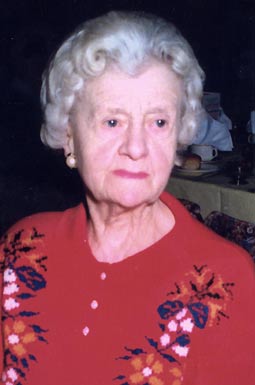
Bridget Bourke was one of the first victims of the killer nurse

Irene Crookes was also killed with a high dose of the diabetes drug

Doris Ludlam, another victim. The court heard that Norris found old women a nuisance
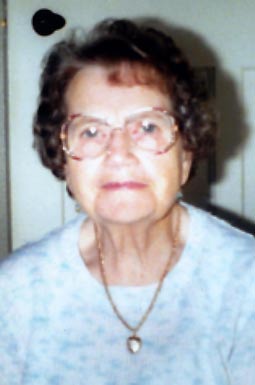
Ethel Hall, the fourth and final victim. When she died after a three week coma, Norris was arrested
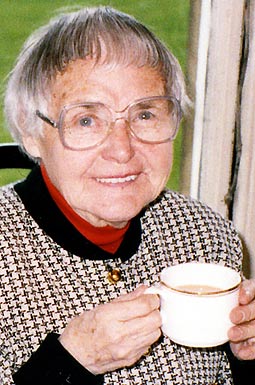
Vera WIlby was lucky to survive an insulin overdose administered by Norris
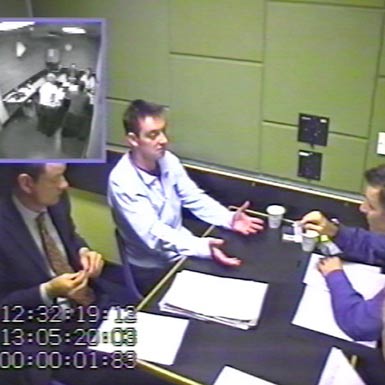
Footage from police CCTV cameras of Norris being interviewed about his crimes

Classification: Serial killer
Characteristics: 'Angel of Death' nurse
Number of victims: 4 - 7
Date of murders: 2002
Date of arrest: October 12, 2005
Date of birth: February 12, 1976
Victims profile: Doris Ludlam, 80, Bridget Bourke, 88, Irene Crookes, 79, and Ethel Hall, 86 (patients)
Method of murder: Poisoning (massive doses of insulin)
Location: Leeds, West Yorkshire, England, United Kingdom
Status: Sentenced to life imprisonment, and ordered to serve a minimum term of 30 years in prison on March 4, 2008
Colin Campbell Norris (b. 1976, Glasgow) was a Scottish nurse and convicted serial killer from the Milton area in Glasgow who murdered four elderly patients in a hospital in Leeds, England, in 2002. He was sentenced in 2008 to serve a minimum of 30 years in prison.
Crimes
Norris worked at Leeds General Infirmary and St James's Hospital. Suspicions were raised when Norris predicted the death of one patient, Ethel Halls, saying she would die at 5:15am and she did. He stated at the time: "it is always in the morning when things go wrong". When questioned by police about this and three other patients who had died while he was on duty, he said "he seemed to have been unlucky over the last 12 months". The four patients were 79, 80, 86 and 88 years old. The police investigated 72 cases in total.
Trial
The trial took 19 weeks and the jury deliberated for 4 days. Norris was convicted on 3 March 2008 of the murder of four women, and the attempted murder of a fifth aged 90. He was sentenced to life imprisonment, and ordered to serve a minimum term of 30 years in prison the following day. Judge Mr Justice Griffith rejected any possibility that Norris was practising euthanasia because none of the victims was terminally ill. He told Norris when sentencing:
"You are, I have absolutely no doubt, a thoroughly evil and dangerous man. You are an arrogant and manipulative man with a real dislike of elderly patients. The most telling evidence was that observation of one of your patients, Bridget Tarpey, who said 'he did not like us old women'."
Referred to in the British press as the "Angel of Death", Norris killed his victims by injecting them with high levels of insulin. Though his victims were women, Norris is gay.
Jessie McTavish, a nurse convicted and then cleared in 1974 for the murder of an 80-year-old patient with insulin, has been identified as a possible inspiration for Norris. He once attended a lecture on her case while studying at nursing college.
Similar cases
In the aftermath of Norris's conviction, the British Media drew comparisons with Doctor Harold Shipman, Britain's most prolific serial killer who killed more than 250 patients by lethal injections. Det Ch Supt Chris Gregg who worked on the Shipman case and led the Norris investigation was convinced that Colin Norris would have gone on to kill considerably more people if he was not stopped in his tracks.
In 2006 Benjamin Geen, a nurse at a hospital in Banbury, Oxfordshire, was given 17 life sentences for murdering two of his patients and attacking 15 others. He used a variety of injections which often included insulin.
'Evil And Arrogant': Killer Nurse Is Jailed
Tuesday March 04, 2008
Nurse Colin Norris has been jailed for life and told he must serve a minimum term of 30 years after murdering four elderly hospital patients who were in his care.
Norris, 32, of Egilsay Terrace, Glasgow, killed the vulnerable women by giving them massive doses of insulin when they went into hospital in Leeds in 2002.
He was given four life sentences with a minimum term of 30 years for each of the murders and a 20-year sentence to run concurrently for attempted murder.
Jailing him at Newcastle Crown Court, Mr Justice Griffith Williams said: "You are, I have absolutely no doubt, a thoroughly evil and dangerous man... arrogant and manipulative, with a real dislike of elderly patients.
"There cannot be any suggestion you were motivated to hasten their ends to spare them suffering; indeed, there was no evidence that any of them was suffering apart from the pains that the elderly sometimes have.
"I suspect you enjoyed the power that ending a life gave you, choosing the elderly because they were defenceless.
"Then, emboldened by the fact that nobody suspected what was happening, it is clear you embarked on what in truth was a campaign of killing - a campaign which would, no doubt, have continued had not experienced medical staff been alerted to what was happening."
The judge said he had considered imposing a full life sentence without any early release.
The aggravating factors were that the victims were vulnerable, Norris breached the trust others had in him as a nurse and that there was a degree of premeditation.
Norris showed no emotion as he was led away from the dock.
West Yorkshire Police detectives have said he showed no remorse for killing Doris Ludlam, 80, Bridget Bourke, 88, Irene Crookes, 79, and Ethel Hall, 86, while he worked at the Leeds General Infirmary (LGI) and the city's St James' Hospital.
He also tried to kill Vera Wilby, 90, but she survived the coma which followed the unnecessary insulin injection.
Police began an investigation after Dr Emma Ward noticed in November 2002 that Mrs Hall had slipped into a hypoglycaemic coma despite not being a diabetic.
Detectives looked at other deaths on the wards from comas when Norris was working and after a lengthy investigation found that by the time Dr Ward raised her concerns he had already killed three times and failed with another attempt.
The nearest the prosecution came to outlining a motive was to suggest that Norris disliked working with the elderly.
All his victims were frail after suffering from hip problems, and could all have been considered a burden to nursing staff.
Colin Norris, 'Angel of Death' nurse, may have killed more
04/03/2008
A staff nurse convicted of murdering four elderly women patients may also have killed three others and was caught before he became "another Harold Shipman", police have said.
Colin Norris, 32, believed he could kill with impunity, claiming four "frail and helpless" victims within six months by injecting them with lethal doses of insulin.
He boasted to hospital colleagues that "someone always died" when he was on the night shift and even accurately predicted when one would lapse into a coma.
Norris, who had developed a hatred of elderly women in particular, showed no emotion as he was found guilty of four murders at Newcastle Crown Court.
He will be sentenced on Tuesday.
Police believe if Norris had not been caught - due to a doctor's vigilance - he could have killed many more, drawing comparisons with Shipman, Britain's most prolific serial killer who killed more than 250 patients by lethal injections.
Stuart Hall, the son of one of his victims, Ethel Hall, said Norris "was either trying to play God or wanted to be seen as a hero". Detectives said he killed simply because the women irritated him.
The gay nurse disliked bathing elderly women.
Det Ch Supt Chris Gregg, who worked on the Shipman case and led the Norris investigation, said: "Harold Shipman showed what can happen if a killer is not caught until the end of his career.
"Here, we have a killer caught at the very beginning of his career. I am convinced that Colin Norris would have gone on to kill considerably more people if he was not stopped in his tracks."
The detective added: "Norris was growing in confidence, he believed he was perfecting his craft. If he had not been caught he would have carried on. Why? Because he enjoyed it.
"He was selecting people who were a nuisance to him. One of the ladies was throwing her bedclothes off her just before he killed her. To him she was an irritant, a nuisance, and for that she died."
Norris, from Glasgow, committed his crimes in 2002 while working in hospitals in Leeds and once said he disliked caring for "geriatric patients".
He was caught when a specialist, Dr Emma Ward, grew suspicious and ordered blood tests on Mrs Hall, 86, after she was found unconscious.
Mrs Hall, who was admitted to hospital with a broken hip, was discovered to have been given 1,000 unnecessary units of insulin, compared to the 50 a day given to someone with diabetes, a condition she did not have.
It prompted a police inquiry into the deaths of 72 patients, which identified 18 suspicious deaths, eight in which Norris the nurse at the point of death.
He was later arrested on suspicion of murdering five women and trying to murder another while clinical explanations were accepted for two of the deaths.
Norris was charged with four murders - Mrs Hall, Doris Ludlam, 80, Bridget Bourke, 88, and Irene Crookes, 79, and one attempted murder, Vera Wilby, 90, after the Crown Prosecution Service considered there were too many complicating medical factors to bring a fifth murder charge.
Post mortem examinations were not conducted in the case of the other two and the deaths were certified as through natural causes.
Prosecuting, Robert Smith QC, told Newcastle Crown Court there were "remarkably common facts" between Norris's five victims, who had all undergone surgery for hip fractures.
Each was in poor health and could be regarded as a "burden to nursing staff", Mr Smith said.
Each suffered from hypoglycaemia between four and 12 days after surgery.
Norris has never revealed a motive for his crime, leading senior detectives to believe he did it simply because he had the opportunity to do so.
Det Ch Supt Gregg said: "What has shone out through this investigation and trial is the absolute dedication of nursing and medical professionals. Colin Norris is an exception to that.
"While others around him were duly caring for their patients, he was looking for opportunities to kill them by poisoning them with insulin.
"He presented himself to police during interview and the court during the trial as an extremely arrogant individual who has not shown the slightest degree of remorse or emotion for what he has done.
"Why he chose to do what he did is only known to him, but it is clear that all hi victims were frail, elderly ladies who were vulnerable in his care.
"Norris is not only a dangerous criminal, but cunning in his actions, choosing times to commit his crimes carefully, being either early in the morning or at weekends when he knew senior and specialist staff were not routinely on duty."
Stuart Hall, 53, a service engineer, called for a public inquiry and also compared Norris to Dr Shipman.
Mr Hall, her son, said: "As the person who injected his victims with insulin, he was the only person who knew what was wrong with them and that gave him the choice if he wanted to administer the antidote and create a miracle revival.
"It gave him the power to give life and to take life. I hope they put him away permanently and never let him out."
Mr Hall added: "Somebody like that is extremely dangerous because they know how to kill discreetly.
"It is very much a Shipman-like thing. It could have been more than five and could yet still prove to be."
Mr Hall said Ethel's widower John had a heart attack three weeks after her death and other members of the family are sometimes too scared to go to hospital.
Dr Hugo Mascie-Taylor, medical director of Leeds Teaching Hospitals NHS Trust, said changes had since been implemented at their hospitals but added that none of the changes could have prevented Norris's crimes.
He said: "These were dreadful crimes that took the victims prematurely from their families. We are very sorry about this and our thoughts today are with the families: for any distress they suffered both at the time of their relative's death and during the course of bringing Colin Norris to justice."
Colin Norris, Angel of Death nurse: Timeline
February 12 1976: Colin Norris is born in Glasgow and raised in Partick by a supportive family.
August 1992: Norris achieves six GCSEs and studies travel, working in travel agencies before switching careers to work as a nurse.
September 1998: Norris begins studying for a Higher Nursing Diploma at Dundee University in the School of Nursing and Midwifery.
January and September 1999: Norris attends lectures on diabetes and the treatment of diabetic patients with insulin.
May 24 to July 4 1999: While training to be a nurse, Norris works on ward 11 at Ninewells Hospital in Dundee where he learns about the management of patients with diabetes.
1999: Norris cares for elderly patients on ward 7 at the Royal Victoria Hospital in Dundee as part of his training. He tells his tutor he hated the placement and missed part of it through "unauthorised absences".
January 11 2001: Norris's personal tutor gives a specific talk to her students on the subject of abuse of elderly patients, including particular reference to a Glasgow nurse in the 1970s who was convicted - but later freed on appeal - of killing elderly patients by injecting them with insulin.
May 21 2001: Norris works at the Riverside Nursing Home in Dundee caring for elderly people and misses 11 days of the placement. During another placement in 2001 at Broughty Ferry Health Centre, near Dundee, Norris tells a district nursing sister he "didn't like working with geriatric patients".
June 2001: Norris graduates from Dundee University with a Higher Nursing Diploma.
October 2001: Norris starts work as a staff nurse at Leeds General Infirmary where he works on ward 36. During the next 14 months he also works on the orthopaedic ward at St James's Hospital in the city.
May 2 2002: Vera Wilby, 90, is admitted to ward 36 at Leeds General Infirmary with a broken left hip after a fall in Rawdon, Leeds. Her condition deteriorates as she recovers from surgery.
May 17 2002: Norris administers a dose of the powerful painkiller morphine to Mrs Wilby to make her drowsy. He then administers more drugs and 90 minutes after he finishes his shift at the hospital, she is found semi-conscious with a sudden hypoglycaemic attack but survives.
June 12 2002: Doris Ludlam, 80, from Pudsey, West Yorkshire, suffers a fall and breaks her hip at Chapel Allerton Hospital in Leeds where she is receiving treatment for a heart complaint. She is transferred to ward 36 at Leeds General Infirmary for surgery.
June 16 2002: Bridget Bourke, 88, of Holbeck, Leeds, is admitted to ward 36 at Leeds General Infirmary with a broken right hip.
June 17 2002: Surgeons operate to repair Mrs Bourke's hip. She is frail and confused, with bleeding in her head and complications from a stroke and she also develops a serious bacterial infection.
June 25 2002: Norris gives Mrs Ludlam an "unnecessary" dose of the powerful painkiller diamorphine, which is double the recommended level. This renders her drowsy and Norris then gives her drugs which reduce her blood sugar level before he goes off shift at 7.45am. She is discovered in a coma about 40 minutes later.
June 27 2002: Mrs Ludlam dies.
July 20 2002: Mrs Bourke falls out of bed.
July 21 2002: Norris, who is working the night shift, claims to have discovered Mrs Bourke slumped in bed at 3.10am. Doctors are called and she is found to be deeply unconscious after a hypoglaecaemic attack, despite not being diabetic.
July 22 2002: Mrs Bourke never recovers and dies shortly after midnight. The death certificate records the cause of death as from a stroke.
October 2002: Mrs Wilby is discharged from hospital and goes to live at a nursing home. She dies the following year from unrelated causes.
October 10 2002: Irene Crookes, 79, from Hunslet, Leeds, falls and fractures her hip and is treated on ward 23 at St James's Hospital. Norris treats her for several days and, although she remains unwell, breathless and requiring oxygen, and needing a walking frame to get about, her condition is giving no undue cause for concern. Norris records in her notes that her condition is improving.
October 19 2002: Norris reports finding Mrs Crookes "totally unresponsive" shortly before 6am. She has suffered a hypoglaecaemic attack but is not diabetic.
October 20 2002: Mrs Crookes dies.
November 2002: Ethel Hall, 86, of Calverley, Leeds, is admitted to ward 36 at Leeds General Infirmary with a fracture to her hip and undergoes surgery to repair it. All goes well and she appears to be recovering, being able to walk with assistance.
November 19 2002: Ethel Hall has fainting spell, which is not unknown for her.
November 20 2002: Ethel Hall takes a "very serious turn for the worse" in the early hours of the morning and staff find her choking. Her blood sugar levels are found to be very low and blood tests show abnormally high levels of insulin.
Earlier in the evening, Norris predicts this change in condition, without any medical indications, in a conversation with colleagues, saying: "Whenever I did nights someone always died." He continues: "It was always in the morning when things go wrong - about 5.15am."
December 6 2002: West Yorkshire Police are called in to investigate.
December 11 2002: Ethel Hall dies of irreversible brain damage without ever regaining consciousness.
December 2002: During questioning by the police, Norris tells officers "he seemed to have been unlucky over the last 12 months" but denies murdering his patients.
September 2003: 14 months after her death, Mrs Bourke's body is exhumed by detectives investigating Norris. A pathologist finds that she died from an insulin-induced coma.
October 12 2005: Norris is charged with four counts of murder and one of attempted murder.
October 16 2007: Norris goes on trial at Newcastle Crown Court charged with four counts of murder and one of attempted murder.
March 3 2008: Norris is found guilty of murdering Ethel Hall, Doris Ludlam, Irene Crookes and Bridget Bourke. He is also convicted of the attempted murder of Vera Wilby.
Colin Norris: From student to deadly abuser
04/03/2008
Colin Norris’s hatred of elderly women developed from the first time he was asked to wash and bathe them at a nursing home.
But what could have inspired the gay nurse on his path towards serial killing may have been the notorious case of Jessie McTavish, accused of being the “sister of mercy who became an angel of death".
Norris was an idle student at nursing college, but one of the few lectures he attended was about the abuse of elderly patients – citing the case of Sister McTavish, who was jailed for killing an 80-year-old patient with an injection of insulin in 1974 although the conviction was later overturned on appeal.
A year after the lecture, Norris’s campaign of murder began adopting the same method - using insulin - and later he even copied McTavish who allegedly predicted the minute that a patient would die.
Norris was born in Glasgow 32 years ago to his namesake father, a painter and decorator, and his mother June, who worked as a typist.
The paradox of his pathological dislike of elderly patients was that the person he had been closest to in his life was his grandmother.
As an only child, he became particularly close to Elizabeth Ogilvie, who is in her late 70s, after his parents divorced when he was nine years old.
She refuses to accept he could be the killer of four woman pensioners, saying: “He can’t have done it, not my grandson, not my boy.”
Later in his life, Norris would tell a colleague that he did not like bathing female patients - “especially because they were the same age as my grandmother”.
He grew up in the city’s Partick area and saw little of his father after the matrimonial split, Mrs Norris remarrying four years later.
Mother and son went to live with her new husband Raymond Morrison, also a painter and decorator, and his young son, in the next street to her mother in Milton, Glasgow.
Norris served as a boy scout and helped look after mentally handicapped people while also becoming involved in amateur dramatics.
At secondary school he passed six standard examinations, Scotland’s equivalent of GCSEs, before going on to college to study travel.
He left the course after a year to work in travel agencies before deciding to train as a nurse when he was 22.
Norris said he made the career switch because “you get to deal with people and get to make a difference in their lives.”
He studied for a Higher Nursing Diploma at Dundee University’s School of Nursing and Midwifery and also had two part-time jobs.
His first contact with elderly patients came during a placement on Ward Seven at the Royal Victoria Hospital, Dundee, in 1998.
Norris complained to a friend that he was unhappy because he did not like geriatric patients - he preferred the excitement of trauma work.
He was also sent to the Riverside View Nursing Home in Dundee, but reported in sick with a sore throat after three days and never returned to complete the planned four week stay.
He told a colleague: “When I was bathing female patients and washing them down below I found it difficult to start with, especially because they were the same age as my grandmother.”
During the three year course, Isabella McLafferty, his personal tutor, recalls having to warn him about his attitude and poor attendance.
It was she that on January 11, 2001 gave a specific talk to her students on the subject of the alleged abuse of elderly patients, including particular reference to the case of Sister McTavish.
She was from Glasgow, Norris’s home city, and her trial caused a sensation three decades ago, although the conviction was later overturned.
As a trainee nurse Norris also worked Ward 11 at Ninewells Hospital, Dundee, where he learned about managing patients with diabetes.
While there he repeatedly refused to change patients or their bedding.
Police have found no evidence to suggest he harmed any of his charges during his student years.
But four months after qualifying he obtained a job as a staff nurse on Ward 36 at Leeds General Infirmary and a six month killing spree followed.
Norris was openly gay, spoke in a strong Scottish accent, wore thick black-rimmed glasses and is also remembered for nipping through the fire escape for a cigarette during night shifts.
He had no criminal record and shared accommodation with other men while living in Leeds.
His first attempt to kill a patient in May 2002 failed when 90 year old Vera Wilby survived because the insulin overdose was counteracted by her naturally high blood-sugar level.
Like the others victims to come, she was frail, vulnerable and in poor state of health both before and after undergoing surgery to repair a damaged hip.
Her quality of life was diminished and she was a difficult patient to care for.
At the end of one of Norris’s night shifts she was found by medical staff in a hypo-glycaemic state, her brain being starved of sugar.
She survived the attack but was the only one to do so.
Norris refined his killing technique before murdering Doris Ludlum, 80, in June 2002.
In the early hours of June 25, Norris gave her an “unnecessary” dose of the powerful painkiller diamorphine, which was double the recommended level.
This rendered her drowsy, and then before he went off shift at 7.45am, Norris injected insulin, which reduced her blood sugar level.
Forty minutes later she was discovered in a coma and she died two days later.
A month later Bridget Bourke, 88, died of the same hypo-glycaemic condition on Norris’ watch, and then Irene Crookes, 79, in October.
All the woman had been injected with massive insulin overdoses, even though they were not diabetics so did not need the drug, as they recovered from routine hip operations.
On each occasion, the deaths were put down to natural causes – and Norris’s confidence grew.
He told a colleague “someone always died” when he was on the nightshift and was said to have become so arrogant that he accurately predicted his next death, that of Ethel Hall, to within 15 minutes.
After she was found collapsed in a coma, Norris pointed to his watch and said to a staff nurse: “I told you so”.
Another former colleague said that Norris seemed to react with “detached amusement” when the women died, while two ex-patients claimed Norris verbally abused them after they rang an emergency buzzer on a ward when an elderly patient climbed out of bed.
They said he told them: “I hope you suffer” and “rot in hell”.
A total of 72 deaths were investigated by police as part of the investigation and 18 were classified as high priority before he was charged with the four murders and attempted murder.
Detectives believe he used the opiates to make his victims drowsy before injecting them with the lethal dose of insulin.
Police recovered documents detailing a less painful way of injecting morphine or diamorphine.
The prosecution said it was impossible to say what the motive was, but all the patients had been difficult and were capable of being a burden to medical staff.
He was suspended by the Royal College of Nursing the day after his arrest on Dec 11 2002. While on bail, he moved back to Glasgow, worked for an events company and travelled abroad eight times while under investigation.
Det Chf Supt Chris Gregg, who led the police inquiry, said: “His arrogance was astonishing. He thought he could get away with murder. “Each time we asked a question he simply evaded it. It was as if he was saying `You can’t prove a thing’.”





Colin Norris has been convicted of murdering four elderly women

The hospital staff nurse targeted patients in his care

He injected frail elderly women on this hospital ward with 20 times the normal dose of insulin

The high doses of insulin starved their brains of glucose, causing coma and death

The young Glaswegian nurse had attempted to kill one patient
and murdered three more before he became arrogant

He announced to colleagues that a patient would die that night, probably around 5.30am

Bridget Bourke was one of the first victims of the killer nurse

Irene Crookes was also killed with a high dose of the diabetes drug

Doris Ludlam, another victim. The court heard that Norris found old women a nuisance

Ethel Hall, the fourth and final victim. When she died after a three week coma, Norris was arrested

Vera WIlby was lucky to survive an insulin overdose administered by Norris

Footage from police CCTV cameras of Norris being interviewed about his crimes


